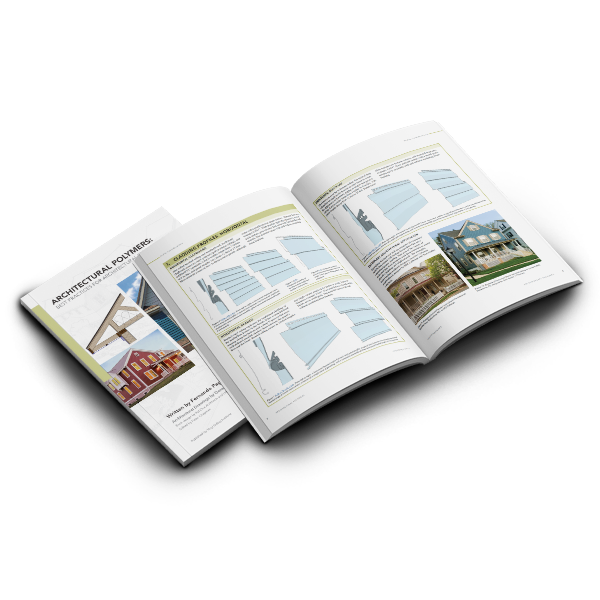Board & Batten and Other Vertical Siding Treatments
By Don Browne
The vinyl siding industry “gets” that architects must adhere to the highest building structure and design standards, even with the most affordable housing projects. And to design buildings that inspire, the best architects need to be inspired themselves.
To this, why not make your lives easier by offering a wide array of material choices that include beautiful styles and colors? Why not be your partners in building design excellence by providing structural solutions and process efficiencies? In this spirit, we say: have we got a book for you!
“Not all manufacturers make all the products, and new styles and colors come into the market every year,” wrote Author, Designer and VSI Consultant Fernando Pagés Ruiz in his latest VSI publication, Architectural Polymers: Best Practices for Architectural Specifications. In the first chapter of this spec guide, Fernando demonstrates that the vinyl siding industry is the exception to this rule, offering a versatile selection of design styles and colors, including those that “cover the typical palette of claddings used in traditional neighborhood design.” Many of these profile choices have been specified for buoyant buildings, portable structures and tiny houses – three of the top architectural trends in 2023.
Get Vertical!
These top trends are matched with vertical cladding treatments like the board and batten style, which has experienced quite a revival in recent years. It gives a classic, rustic American look to a home’s exterior, adding significant curb appeal in traditional neighborhoods and for modern home designs. Board and batten works nicely in dual-style exteriors with emulated styles like shakes and shingles and masonry – all of which are produced by VSI’s member manufacturers.
Whether it’s the more popular narrow battens superimposed on wide boards or the wide panels over narrow chamfers, board and batten, along with other vertical claddings, conforms nicely to arches and are ideal for curbed structures where horizontal profiles would not work.
According to Fernando, “vertical sidings offer an advantage at locations where seams would detract from the surface because the vertical joints between panels remain invisible.” For the same reason vertical claddings are optimal for smaller homebuilding trends, board and batten adds a more intriguing design for architectural callouts like dormers, bump outs and other expanded features. They can also add more visual appeal under eaves or even to entire upper floors, a creative alternative to giving more character to townhouse development facades.
More Tool Than Book
The PDF version of this guidebook has downloadable zip folders containing autoCAD files for your construction details. Accordingly, autoCAD files for board and batten and other cladding styles can be found in the Profile Considerations (chapter 1 – pages 2-11). I highly recommend that architects consult page 11 of this chapter as it highlights other polymeric innovations, the ever-increasing spectrum of colors and the industry’s success with producing textures that emulate authentic wood grains, especially for shakes, shingles and other shapes used for traditional neighborhood projects. Fernando does a nice “walk-through” of his guidebook (that he calls a “tool”) in VSI’s first ADP course offering, “Architectural Polymers: Best Practices for Architectural Specification” (see a review of this course in this newsletter).
_____________________________________________________________________________________________________________________
Don Browne is a writer, entrepreneur and local legislator who believes that the power of words can change the world. He provides unique writing services for clients in the construction, health care, IT and hospitality sectors. He has a passion for small business and start-ups, as well as writing about Irish history, family and corporate biographies. As a homeowner and father of four who is passionate about community development, Don looks forward to writing more about the exciting possibilities of creating traditional neighborhoods and more sustainable communities using modern materials.

